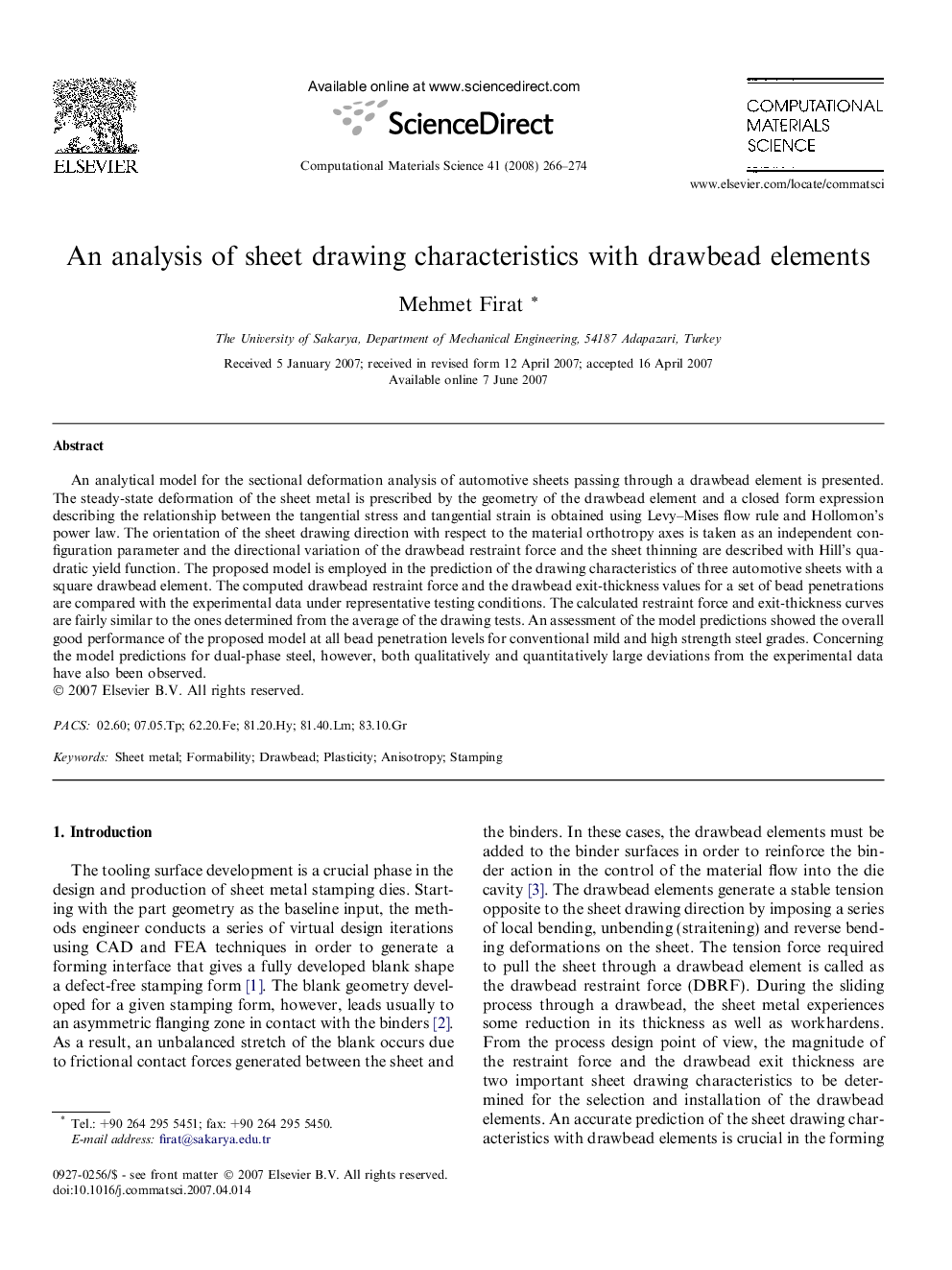| Article ID | Journal | Published Year | Pages | File Type |
|---|---|---|---|---|
| 1564061 | Computational Materials Science | 2008 | 9 Pages |
An analytical model for the sectional deformation analysis of automotive sheets passing through a drawbead element is presented. The steady-state deformation of the sheet metal is prescribed by the geometry of the drawbead element and a closed form expression describing the relationship between the tangential stress and tangential strain is obtained using Levy–Mises flow rule and Hollomon’s power law. The orientation of the sheet drawing direction with respect to the material orthotropy axes is taken as an independent configuration parameter and the directional variation of the drawbead restraint force and the sheet thinning are described with Hill’s quadratic yield function. The proposed model is employed in the prediction of the drawing characteristics of three automotive sheets with a square drawbead element. The computed drawbead restraint force and the drawbead exit-thickness values for a set of bead penetrations are compared with the experimental data under representative testing conditions. The calculated restraint force and exit-thickness curves are fairly similar to the ones determined from the average of the drawing tests. An assessment of the model predictions showed the overall good performance of the proposed model at all bead penetration levels for conventional mild and high strength steel grades. Concerning the model predictions for dual-phase steel, however, both qualitatively and quantitatively large deviations from the experimental data have also been observed.
